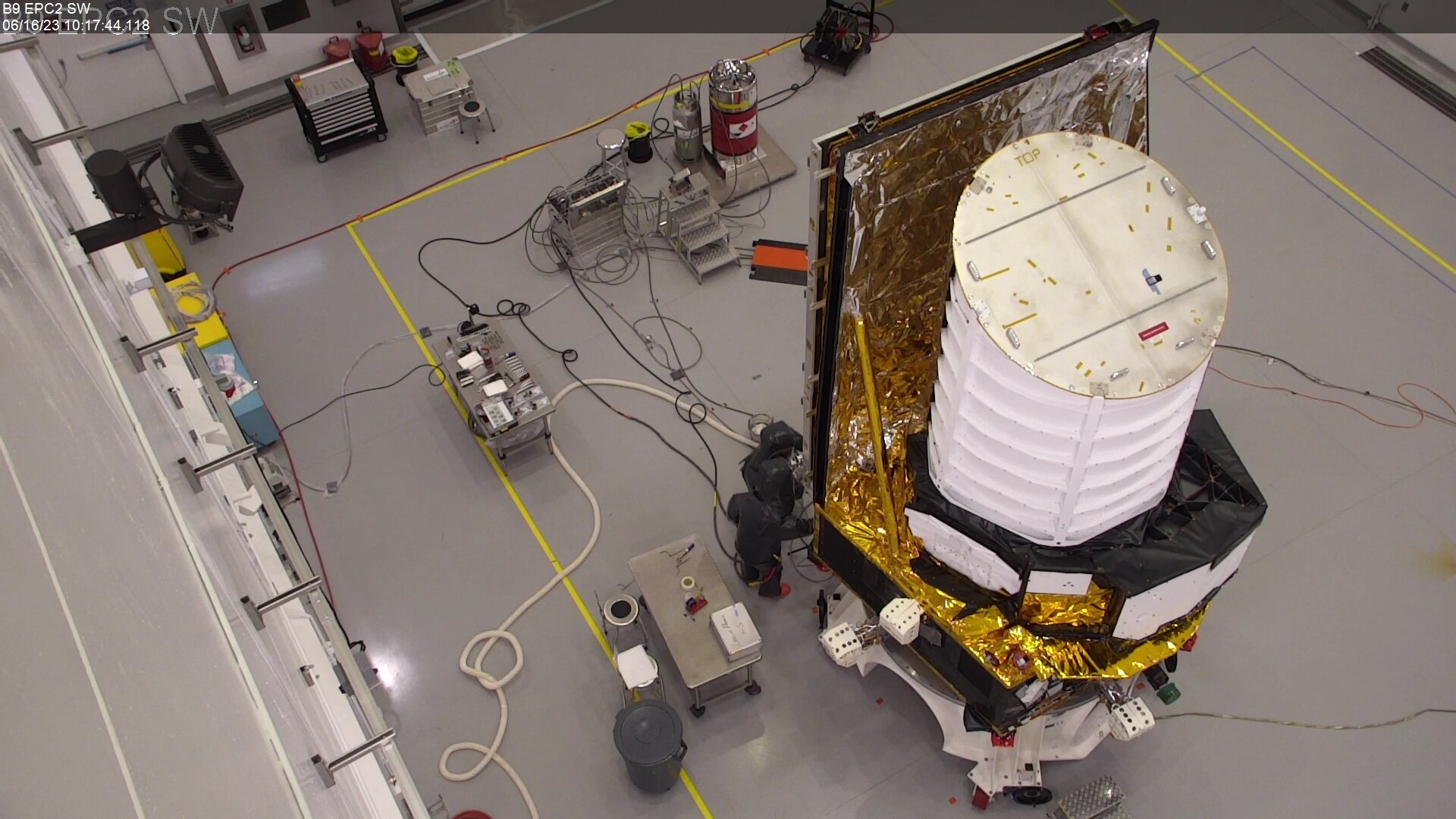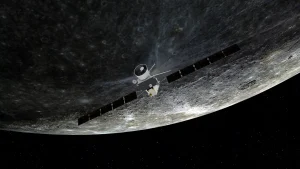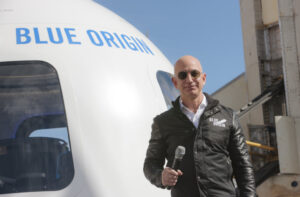ESA’s Euclid fuels up ahead of its launch on July 1st
22nd Jun 2023
The European Space Agency’s (ESA) Euclid spacecraft, which is set to study the universe’s dark energy and matter, is inching closer to launch. According to a statement from ESA on June 19th, the spacecraft began the fuelling process ahead of its launch atop a SpaceX Falcon 9. The Euclid mission was originally set to launch from a Soyuz rocket before the Russian invasion of Ukraine.
ESA announced on Twitter it has set a launch date for Saturday, July 1st, with a backup window the next day.
Fuel to launch Euclid 1.5 million km away
The 4.7-meter tall spacecraft is preparing to launch towards the Sun-Earth Lagrange Point 2 (L2), about 1.5 million kilometers away from Earth. Euclid began the fuelling process inside an Astrotech facility near the Cape Canaveral launch base this June, after arriving in Florida in May.
Euclid is fuelled by two types of propellant, ESA explains, including the “highly toxic” hydrazine and gaseous nitrogen. Ten hydrazine thrusters will provide the chemical propulsion for Euclid to reach L2, perform frequent manoeuvers to help it stay in orbit, and de-orbit the spacecraft after the six-year mission. ESA said because the fuelling operation is toxic, it had to be carried out by experts wearing a self-contained atmospheric protective ensemble.
Because Euclid will be revealing how the Universe has evolved and expanded, it needs to have “very precise and stable pointing” to deliver the highest quality images. Therefore, ESA explained Euclid will use six cold gas micro-propulsion thrusters fed by nitrogen stored in four tanks at high pressure.
Euclid will store 70 kilograms of nitrogen to help it last for six years, plus 140 kilograms of hydrazine.
Euclid mission
The Euclid mission gets its name from the Greek mathematician Euclid of Alexandria, according to ESA. Euclid lived around 300 BC and discovered the subject of geometry. Euclid was selected in October 2011 as part of ESA’s medium-class Cosmic Vision science programme (flagship European-led missions to launch once every decade), with a budget cap of €500 million. ESA’s JUICE mission was the latest Cosmic Vision spacecraft. JUICE launched into space in April, and it will focus on studying Jupiter and its three largest moons.
Euclid will address two core themes of the Cosmic Vision programme: What are the fundamental physical laws of the universe and, how did the universe originate and what is it made of?
The telescope will “map the geometry of the Universe and better understand the mysterious dark matter and dark energy, which make up most of the energy budget of the cosmos”, ESA explains. The spacecraft will investigate the evolution of the dark universe by making a 3D map and observing the billions of galaxies as far as 10 billion light-years away.
The telescope will investigate the distance-redshift relationship and the evolution of cosmic structures by measuring the shapes and redshifts of galaxies and clusters of galaxies.
The UK is also involved in the mission, including funding research teams that are contributing to the spacecraft.







Thank you for your comment! It will be visible on the site after moderation.